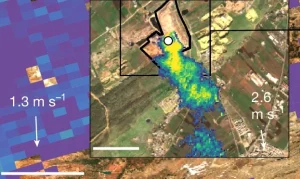Immigration doubles into EU from W Africa, drops via eastern Med

While statistics released show that immigration into the EU on its eastern flank have reduced considerably, the opposite is the case of West Africa, according to AFP on October 15th.
Detected irregular crossings into the European Union fell 42% in the first nine months of 2024 compared to the same period last year, EU border agency Frontex claims.
The number of detected crossings into the EU “fell by 42 percent to 166,000 in the first nine months of this year,” Frontex said.
READ: Tunisia: Europe remains just out of migrant’s reach
It said the biggest falls were along the routes through the Western Balkans and Central Mediterranean.
According to the report, nearly 17,000 would-be asylum seekers crossed into the 27-member EU via the Western Balkans, a 79% drop. Some 47,700 entered via the Central Mediterranean, a fall of 64%.
By contrast, Frontex said crossings via the Western African route had doubled, reaching over 30,600 in the first nine months of the year. Many of these routes are from Mauritania, Senegal and Morocco’s disputed territory in its south, Western Sahara where people on flimsy boats head towards the Canary Islands.
New EU rules, adopted in May, “aim to share the responsibility for hosting asylum seekers across the 27 countries in the EU and to speed up the deportation of people deemed ineligible to stay” reports AFP.
READ: Algeria re-introduces visa requirements on Moroccans
However, some EU countries are looking to adopt their own new tougher measures.
France’s new Prime Minister Michel Barnier said that his country needed a stricter policy on immigration and integration on October 2nd, according to the Arab Weekly and other agencies. “We no longer have satisfactory control over our migration policy,” Barnier said. “As a result, no longer are we meeting our integration objectives in a satisfactory manner,” the 73-year-old told the National Assembly, France’s parliament’s lower house.
AFP/Maghrebi/agencies
Want to chase the pulse of North Africa?
Subscribe to receive our FREE weekly PDF magazine














